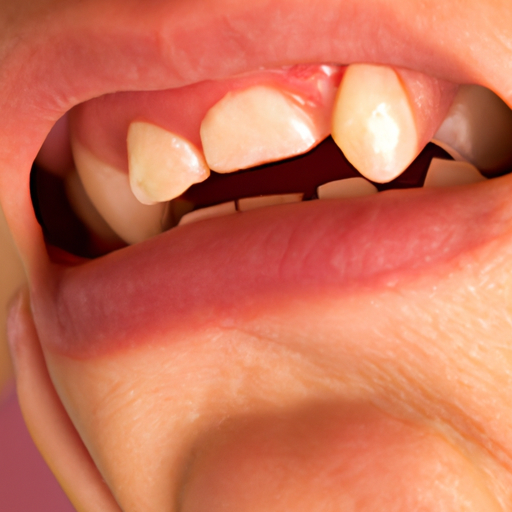In recent years, the popularity of celery-based diets has soared, with many individuals touting its potential health benefits. However, with any new diet trend, it is important to delve deeper into the subject and understand both the benefits and risks associated with it. This article aims to provide a comprehensive overview of the celery-based diet, including its benefits, risks, and expert opinions. Additionally, we will explore the diagnosis and management of celery allergies, discussing symptoms, testing methods, and prevention strategies. Lastly, we will delve into the science behind celery-based diets, examining the causes, nutritional value, and potential health benefits they may offer. Whether you are considering adopting a celery-based diet or simply curious about its effects, this article aims to provide you with the information you need to make an informed decision about your dietary choices.
You can find out more about this theme here: https://bbgate.com/media/mephedrone-synthesis.55/.
1. “Understanding the Celery-Based Diet: Benefits, Risks, and Expert Opinions”
The Celery-Based Diet has gained popularity in recent years as a way to promote weight loss and improve overall health. This diet involves consuming mainly celery and other low-calorie foods, with the belief that celery has negative calories, meaning it takes more energy to digest than it provides. While proponents of this diet claim various health benefits, it is essential to understand the potential risks and consider expert opinions before embarking on any restrictive eating plan.
One of the main benefits associated with the Celery-Based Diet is its potential for weight loss. Celery is low in calories and high in fiber, which can help individuals feel full and satisfied while consuming fewer calories. Additionally, the diet encourages the consumption of other low-calorie, nutrient-dense foods, such as leafy greens and fruits, which can further support weight loss efforts.
Another potential benefit of the Celery-Based Diet is its high water content. Celery is approximately 95% water, making it a hydrating food choice. Staying hydrated is crucial for overall health and can aid in digestion, circulation, and nutrient absorption.
However, it is important to note that the Celery-Based Diet is highly restrictive and may not provide all the necessary nutrients for optimal health. Celery, while nutritious, lacks certain essential nutrients like protein, healthy fats, and various vitamins and minerals. Relying solely on celery for an extended period can lead to nutrient deficiencies and potential health complications.
Furthermore, the Celery-Based Diet may not be suitable for everyone. Individuals with certain medical conditions, such as diabetes, kidney problems, or digestive disorders, should exercise caution when considering this diet. The high fiber content of celery can affect blood sugar levels and digestion in some individuals. Consulting with a healthcare professional before starting any new diet is always recommended.
Experts in the field of nutrition often emphasize the importance of a balanced and varied diet that includes a wide range of fruits, vegetables, whole grains, lean proteins, and healthy fats. While celery can be a nutritious addition to a well-rounded diet, relying solely on it may not provide all the necessary nutrients for overall health.
In conclusion, the Celery-Based Diet can offer potential weight loss benefits and hydration advantages due to its low-calorie and high water content. However, it is crucial to consider the potential risks, such as nutrient deficiencies, and consult with healthcare professionals before embarking on any restrictive eating plan. A balanced and varied diet, including a wide range of nutritious foods, remains the recommended approach for long-term health and well-being.
2. “Diagnosing and Managing Celery Allergies: Symptoms, Testing, and Prevention”
Celery, a popular vegetable known for its crisp texture and unique flavor, can be enjoyed in various dishes. However, for some individuals, consuming celery can lead to allergic reactions. Celery allergies are not as common as other food allergies, but they can still cause significant discomfort and health issues for those affected. In this section, we will delve into the process of diagnosing and managing celery allergies, including the symptoms, testing methods, and preventive measures.
The symptoms of a celery allergy can range from mild to severe, depending on the individual’s sensitivity. Common symptoms include itching and swelling of the lips, mouth, and throat, as well as hives, eczema, or other skin reactions. Some people may experience digestive issues such as nausea, vomiting, or diarrhea after consuming celery. In severe cases, an allergic reaction can lead to anaphylaxis, a life-threatening condition characterized by difficulty breathing, a drop in blood pressure, and loss of consciousness.
If you suspect that you or someone you know may have a celery allergy, it is crucial to seek medical advice for proper diagnosis. An allergist, a specialized doctor in diagnosing and treating allergies, can help determine the presence of a celery allergy through various tests. The most common diagnostic method is a skin prick test, where small amounts of celery extract are applied to the skin, and any resulting allergic reactions are observed. Blood tests, such as the specific IgE test, can also be conducted to measure the level of allergic antibodies present in the bloodstream.
Once a celery allergy is diagnosed, managing the condition involves avoiding all forms of celery, including the vegetable itself, as well as celery seeds, celery salt, and products containing celery as an ingredient. It is essential to carefully read food labels, as celery can be present in unexpected foods such as soups, broths, sauces, and even some processed meats. Cross-contamination can also occur in kitchens, so it is crucial to thoroughly clean utensils, cutting boards, and surfaces that may have come into contact with celery.
In case of accidental exposure to celery or a severe allergic reaction, it is vital to carry an epinephrine auto-injector, commonly known as an EpiPen. This device can be used to administer a dose of epinephrine, a medication that can reverse the symptoms of anaphylaxis and provide temporary relief. However, the use of an EpiPen should always be followed by seeking immediate medical attention.
Preventing celery allergies can be challenging, especially since they are often developed during childhood. However, some studies suggest that introducing small amounts of cooked celery to infants between four to six months of age may help reduce the risk of allergies later in life
3. “Exploring the Science Behind Celery-Based Diets: Causes, Nutritional Value, and Potential Health Benefits”
Celery has gained popularity as a key component of various diets, particularly in recent years. It is widely recognized as a low-calorie vegetable, making it a popular choice for those looking to lose weight. But what exactly is the science behind celery-based diets? In this section, we will explore the causes, nutritional value, and potential health benefits of incorporating celery into our daily meals.
Firstly, let’s delve into the causes behind the rise of celery-based diets. One of the main reasons is its low calorie and high water content. Celery is composed of nearly 95% water, which means it is an extremely hydrating food. Additionally, it is low in calories, with only about 10 calories per stalk. This makes it an attractive option for individuals aiming to shed pounds or maintain a healthy weight.
Moving on to the nutritional value of celery, it is a nutrient-rich vegetable that provides several essential vitamins and minerals. It is a great source of vitamin K, which plays a vital role in blood clotting and bone health. Celery also contains significant amounts of vitamin C, which boosts the immune system and aids in collagen production. Moreover, it is rich in folate, potassium, and dietary fiber, all of which contribute to overall well-being.
Beyond its nutritional content, celery has been associated with various potential health benefits. One of the most well-known benefits is its potential to reduce inflammation. Celery contains specific antioxidants, such as apigenin and luteolin, which possess anti-inflammatory properties. Regularly consuming celery may help mitigate chronic inflammation, which is linked to several health conditions, including heart disease, diabetes, and certain types of cancer.
Another potential health benefit of celery is its role in digestion and gut health. The high fiber content in celery promotes regular bowel movements and aids in preventing constipation. Additionally, celery contains a compound called polyphenol, which acts as a prebiotic, nourishing the beneficial bacteria in our gut. Maintaining a healthy gut microbiome is crucial for digestive health and overall well-being.
Furthermore, celery has been associated with potential weight loss benefits. As mentioned earlier, it is a low-calorie food that can be easily incorporated into a calorie-controlled diet. The high water and fiber content in celery contribute to a feeling of fullness, reducing the urge to overeat. Additionally, the act of chewing celery requires more effort, burning a few extra calories in the process.
It is worth noting that while celery-based diets can offer several potential health benefits, they should not be solely relied upon for overall nutrition. It is important to maintain a balanced diet that includes a variety of fruits, vegetables, whole grains, lean proteins, and healthy fats. Celery



